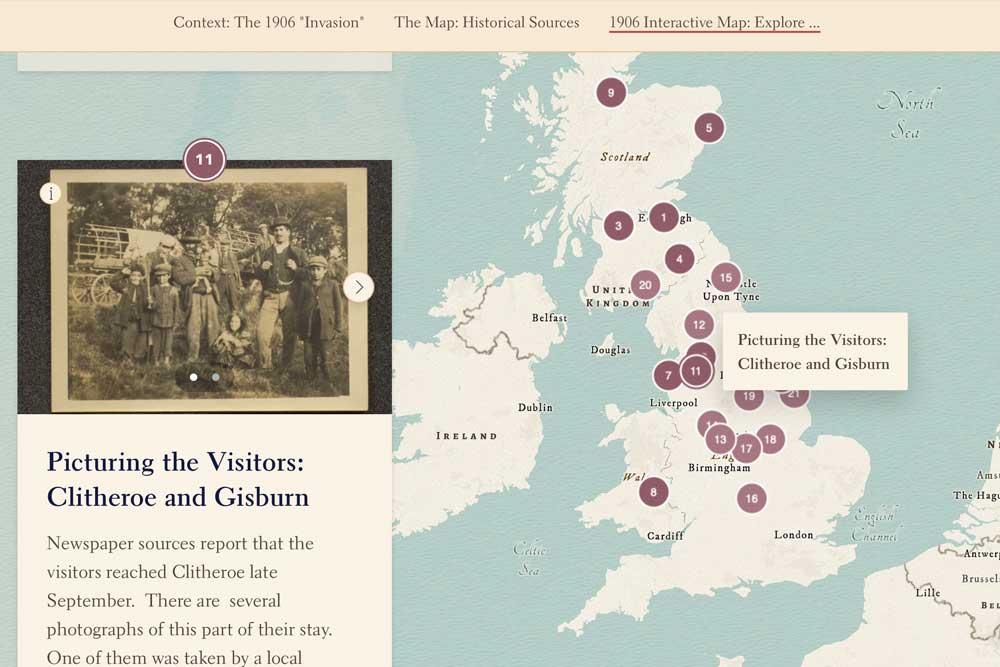
University of Liverpool hosts RomMig Project Workshop – 7 October 2025
How can we trace the movements of a community often written about, but rarely heard from directly? Since 2022, the RomMig project—a collaboration between the UK’s Arts and Humanities Research Council (AHRC) and Germany’s Deutsche Forschungsgemeinschaft (DFG)—has been exploring this question by mapping the journeys and media representations of Romani migration between Germany and Britain from the 1880s to 1914.
On 7 October 2025, lead investigators Professor Eve Rosenhaft and Dr Tamara West welcomed scholars, community organisations, and the wider public to the University’s School of the Arts Library for an afternoon of lively discussion, collaboration, and reflection. The RomMig Project Workshop, offered participants a chance to explore the project’s findings and to contribute ideas to the next phase of this unique research initiative.
Mapping migration and media: a forgotten story revisited
The RomMig project has focused on the 1906 migration of around 200 Sinti and Roma from Germany to Britain. Driven by a wave of police repression in the German Reich, these travellers moved across the UK in small groups—appearing at horse fairs, markets, and fairgrounds—earning a living through performance and trade.
Their movements became a media spectacle, sensationalised in the press as the “German Gipsy Invasion.” The RomMig team’s research has brought this episode to life through static and interactive maps built from police records, press reports, and visual archives – including Liverpool’s own special collections and archives. These maps not only trace the routes taken but also reveal how public and institutional responses shaped Romani experiences in both countries.
Collaboration and community
In September 2025, an initial version of the RomMig map was discussed at a community research partner workshop in Ahlem, Germany, with members of the German Sinti community. The Liverpool workshop built on that momentum, engaging with UK-based Gypsy, Roma and Traveller (GRT) community members, alongside curators and archivists dedicated to integrating Romani history into public collections.
The conversations in Ahlem and Liverpool helped to guide the next stage of map development, with a final version of the digital map expected to be completed by mid-2026.
Continuing the conversation
This event offered an opportunity for reflection on the historical context of the story and also the role played by digital innovation, and cross-community dialogue. Participants shared ideas about how mapping and storytelling can help recover marginalised histories and challenge contemporary forms of anti-Romani discrimination.
For more about the project, visit rommig.org.